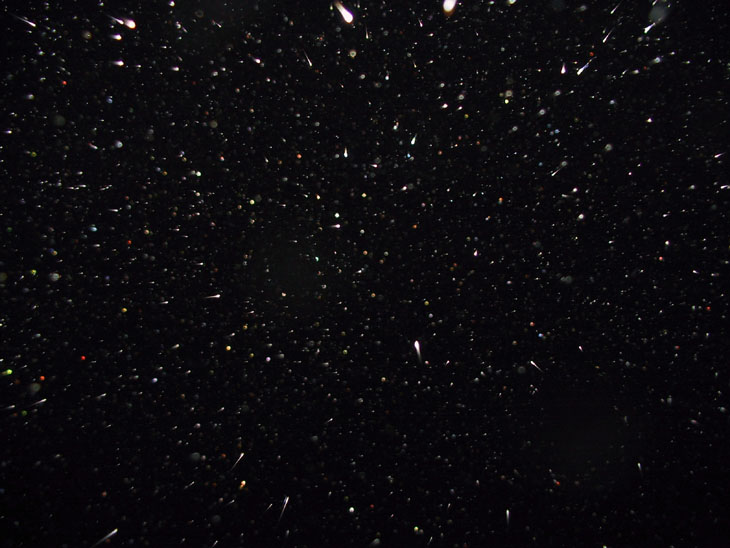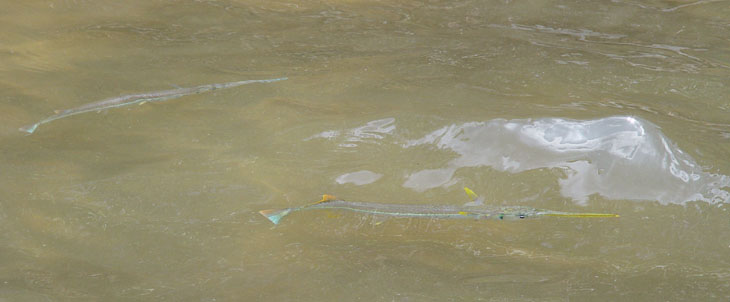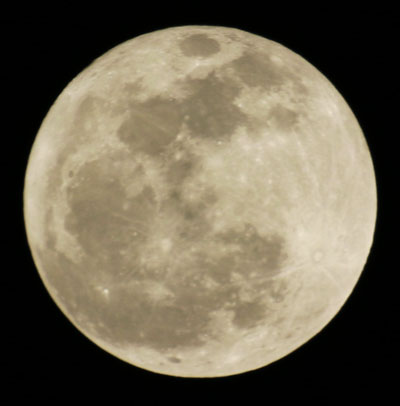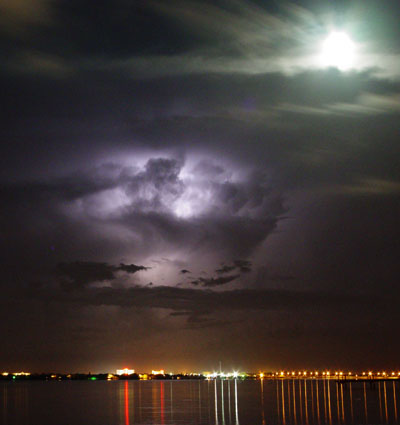You know, it’s not too often that I select articles to respond to here, mostly because my readership is small and I’m fairly remote – I’d rather respond where the article appears, and reach the same audience. At the same time, I’m more often simply passing on thoughts that stand alone when I can. But this one not only deserved a response, it demonstrates some of the larger problems which bear their own examination.
BioLogos is an organization that seeks to rectify the “warfare” between science and religion, and get them to live in harmony – don’t take my interpretation of it, you can see their mission on the About page connected to that link. It’s funded by the Templeton Foundation, which has much the same goal. The problem is, there’s really no disharmony or warfare involved. Science, as I’ve said before, is merely a methodical process of learning. It examines nature and, through tests and measurements and lots of attention, finds out how things work. Scientific laws aren’t arbitrary creations of scientists, but merely expressions of natural constants – if you have no idea what they are, they still work exactly the same for you.
The conflict (which often gets treated as “warfare” and deliberate attacks upon religion if you ask the religious) comes in when nothing in the slightest supernatural, mystical, or religious is found when we do this – in other words, no evidence for religious “truths” are ever found. At all.
Normally, this shouldn’t be any big deal, right? Who cares if science can find god? Science is imperfect, but god is everywhere, and all that. Except, no one can seem to agree on what god is or does. As we get more detailed about god’s word and god’s functions and miracles and such, they aren’t actually leading us anywhere, providing any knowledge, provoking the human spirit to new heights, or, well, anything, really. Science, on the other hand, is responsible for massive gains in knowledge, ability, health, welfare, transportation, understanding, and so on. We use it, we rely on it, we’re incredibly happy with it, because it works. And after relying on religion to help us burn people at the stake, drive off demons causing headaches and convulsions, tell us who wasn’t “chosen,” and all that fun stuff from a loving god, science started giving us things that actually worked. So, we use it.
What this actually means is that religion is fading away and losing all the power it once had, and those that wielded this power are quite perturbed by this. Those that liked the idea that they were “chosen” and “saved” and guaranteed a fun time for the remainder of eternity are frustrated that this guarantee looks like it won’t stand up in court. And those that feel that the world shouldn’t be unfair don’t want to hear that “fairness” is only a human concept, and adversity just something to be dealt with. So, there’s resistance. That brings us to the article.
“One World: Science and Christianity in Respectful Dialogue, Part I” by Loren Wilkinson is what BioLogos seems to think is a reconciliation between science and religion. It’s unfortunate that Wilkinson doesn’t seem to even understand what science is, much less how it works, and indicative of a greater problem with BioLogos‘ supposed mission is that this article falls so wide of the mark. The first sentence crashes spectacularly not just once, but twice:
The BioLogos Foundation, with its commitment to the “integration of science and Christian faith” is one of many signs that the 150-year-old idea of a “warfare” between science and religion is ending.
Well, the attacks of religion against science have been going on for a lot longer than 150 years, because they certainly didn’t start (as I’m sure Wilkinson is implying) with Darwin’s Theory of Evolution by Natural Selection. Pretty much from the start of christianity, it’s been trashing the rights of human beings, torturing those that failed to avow their obeisance to the scripture, and pillaging those areas of the world considered not holy enough. Galileo was forced to renounce his work on planetary motion – you know, that Earth revolves around the Sun? – and Giordano Bruno was burned at the stake for refusing to recant his theory that the sun was one of many such stars in the universe. You have heard of witch hunts, right? Wilkinson apparently hasn’t. So, either Wilkinson learned absolutely nothing from history, or wants to ignore it entirely in favor of minimizing the church’s warfare against people who dared examine the natural world and learn from it, as well as people who simply didn’t find scripture all that useful, who got to be tortured and killed too.
That’s part one. Part two, for the same sentence, is that BioLogos isn’t really a sign of the end of the warfare, because it doesn’t actually reconcile anything. All it’s doing is fighting to make religion seem relevant to a world that no longer needs it. Let’s keep going, because you may be thinking I’m saying that from bias or spite. On this “warfare”:
First, it obscures the recognition that science at its core, is a religious activity, in the deepest and most literal sense of “re-ligious”—that which links. Religion and science both come from the uniquely human passion to see the diverse pieces of our experience as one supple and coherent body of knowledge: thus its connection with a word like “ligament”, the tissue which holds the skeleton together.
Well, first of all, it’s one hell of a stretch to use the word in the form of its Latin roots and claim this is what it means – especially since dictionaries don’t even recognize this usage of the root, much less the word. Both “religion” and “ligament” have the same root meaning, but it isn’t “to link” – it’s “to bind.” That didn’t sell as well, I’m guessing.
But, he might actually be right that religion and science came from seeking knowledge… though he didn’t actually say this, did he? He’s trying to say they’re intended to be united, which is another stretch. I’ll let this one go, though – sure, we seek knowledge. Philosophy and astrology have the same root cause too. But one’s a semi-valid pursuit of understanding, and the other’s a pile of imagined horseshit. Examining roots doesn’t actually get us anywhere, does it? Nor does thinking that, as supposed forms of knowledge, they are united in goal and value.
There is no science without scientists, and scientists are always and only humans, probing and coming to know an inexhaustibly mysterious cosmos by means of their own passions, beliefs, hunches and theories.
No and no. Science is merely finding out how things work – it only needs scientists to express it to others. Natural laws work without human input at all. The structure of scientific investigation is in place solely because we’re fallible and prone to mistakes. And that’s where the second part of this sentence falls flat, in that science specifically weeds out the passions, beliefs, and hunches to reveal only what is. A scientist can be exceptionally passionate about the aether, for example, and believe in it fervently, but when the tests reveal it doesn’t exist, accepting that is science. I point this out because Wilkinson, having started to couch knowledge in terms of emotion, plans to use this shifty little trick later on.
Second, and more specifically, the warfare language hides the fact that the modern tradition of empirical science has deep roots in the Jewish and Christian tradition. The point was first made clearly in Michael Foster’s meticulously reasoned series of articles, “The Christian Doctrine of Creation and the Origins of Modern Science”, published in the resolutely positivist philosophical journal Mind in 1934.
Actually, empirical science (christians do so love that word, “empirical”) has roots that predate christianity by centuries. The Greeks knew the world was spherical, and had pretty damn good measurements of it, before the biblical stories calling it flat and rectangular made it out of the middle east. The Romans had remarkably long-lasting architecture, aqueducts, roads, monetary systems, and such before jesus was born. Ötzi the Iceman possessed smelted ores used for tools and weapons, a thousand years before the time of the great flood. So, uh, bullshit. The point was false long before Michael Foster came along.
The warfare language implies that there were two kinds of knowledge: “religious knowledge”, established only by emotion and authority, and scientific knowledge, established by experience, experiment and testing. If true this would be a disastrous situation, culturally and personally, since it would doom “religious” people to living in a pseudo-reality constructed from dogma and wishful thinking, and “scientific” people living in a meaningless world of emotion-free “facts” each of which they must establish for themselves.
I agree with Wilkinson, it would be disastrous for “religious” people (his quotes) to live in a pseudo-reality constructed from dogma and wishful thinking. Only, that’s exactly what they do. That’s why there’s a conflict with science – because the real world doesn’t demonstrate any of the properties they really want it to have. Boo hoo.
Meanwhile, people do live in a world of emotion-free facts, and despite Wilkinson’s placement of scare-quotes around the word, facts do indeed exist (for an organization that supposedly supports science alongside religion, this seems like a snarky thing to let slip by, doesn’t it? It’s the kind of thing that a godbot that denigrates science would do, actually.) And yes, these facts have no emotions – how stupid can your point be? Emotions are the traits of living species. Wilkinson wants to imply here that scientists do not feel emotion, but perhaps even he knew that this was one piece of bullshit that he couldn’t pull off. That doesn’t stop him from implying that science dismisses emotions further down in the article, though. This is a favorite within religious arguments, as if emotion is the key to knowledge or “truth.” You’ll see it a lot.
But meaning? Yes, there’s another of the favorite words of the religious, and I’ve addressed this too. Despite the fervent avowals of every religion that this is what they specifically provide, I haven’t actually seen it. Depending on who you ask, it’s to “spread the good word” (seems to be a lot of trouble to go through, floods and wars and all that, to let people know about an omnipotent being who could establish it in our minds in an eyeblink,) or it’s something mysterious we aren’t meant to know – this one invariably comes up when the religious get stumped. Neither one really does anything for me, sorry to say. The chair I’m sitting in is “meaningless,” as are the rocks out in the yard. But we can find a use for both, and even gain knowledge from them. In fact, the pursuit and dissemination of knowledge works pretty damn well as a meaning to me, but that’s simply because we evolved to seek it. So?
We live in one world, part of which we know on authority, part of which we know on experience.
Ah, we come to the common religious tactic of assertion! Just a little sentence fragment, intended to justify and legitimize scripture by saying we know something on “authority.” But, pray tell (yow I’m a hoot,) what is this knowledge that we gained on authority? Can we use it in any way? Is it the creation of the world in seven days? The garden of eden? Noah’s flood? Tower of babel, david & goliath, samson & delilah, jesus, peter? What bits have given us something that contributes to our lives and advancement as humans? Be careful now, because I don’t work from christianity being the only religion in the world, and you’ll have to prove that christians, with this special knowledge, are more advanced than others without it. I’ll be demanding real evidence.
Because, the real reason we have BioLogos and Wilkinson trying to become one with science is that science has that legitimacy they both want, and do not have from their scripture. The more we know, the sillier the biblical stories get, and that’s been going on for a few hundred years now.
From here, Wilkinson then starts mixing jargon-speak about scientific models with philosophical speculation about how adam & eve can fit into the facts of evolution – supposedly, you can take this inane concept about human progenitors and “model” it. No, you actually can’t, and the point he’s trying to hide in the smoke is that both human history and simple logic render the adam & eve story as fatuous. Models give us the means to examine what affect such a premise would have on human development – just saying “we modeled it” is meaningless. What do the models measure and produce? Well, they don’t produce anything, because in order to even try to apply their model into what we know about evolutionary development, they have to change the criteria from the scripture to fit the facts. That makes the scriptural accounts an admitted dead end. Even if the model produced some kind of results, the results couldn’t then tally back into scripture because that’s not what they tested in the first place. In fact, they tested nothing at all, because this talk about models didn’t actually involve any method for which models are used. It’s simply a way to make mere idle speculation sound important.
I want you to notice something here, too, because it’s exceptionally common. Wilkinson doesn’t seem to have any issues with trashing “facts,” most especially when they don’t go the way he’d like them to, and his ignorance of church history is phenomenal. But then he openly tries to use science (or an abject bastardization of it, anyway) as a way to give scripture an improved stature. Notice that we’re not even finding biblical accounts that predicted scientific findings, a pretty solid method of saying that knowledge can come from scripture. We’re warping scripture to try and blend it into what science has already established, and in doing so, holding up scripture as “knowledge from authority.” Cute, isn’t it?
It gets better. On the detailed rebuttals from Jerry Coyne and Eric MacDonald:
Both write from within that familiar fog of confusion (typical of both a-theist and religious fundamentalisms) which arises whenever we assume that the only relationship between religion and science is one of warfare.
You are, of course, welcome to read their input and see if either of them seems to be in a confused fog, or treating the advancement of this model theory as “warfare.” Both, instead, know very well that reliable knowledge comes from evidence and support, function and testability. They address why the model theory fails. But it doesn’t work for Wilkinson’s agenda to have to deal with facts, so he openly resorts to demonizing the opposition, perhaps hoping (and probably being right in far too many cases) that his intended audience isn’t bright enough to see for themselves.
And it goes on, with Wilkinson attempting to draw a metaphorical use for genesis by claiming it defines man’s relation to the cosmos, the purpose of it, and the purpose to man. That is accomplishes none of these is simply ignored outright – again, if it has been asserted, there is no reason to support this assertion with something so crass as evidence, is there? Welcome to what you receive when you seek real answers from religion.
Theologians throughout the entire history of christianity have spent untold years trying to reconcile scriptural accounts in some euphemistic or metaphorical way, but none of them have ever stood up to scrutiny, much less produced any kind of supporting evidence. Sooner or later, you have to come to the realization that the story is simply bullshit. The very fact that it’s taken this long (and will still continue at least a little bit longer) is evidence that the search for religious knowledge isn’t going to work until you treat it like science does, and accept the bad results with the good. It’s fine to start with a premise and see how well it fits, but when it doesn’t, even after all this time, you need to look for something that does. Oh, wait! We’ve already found that long ago! Thus, the “warfare” isn’t a duel between science and religion, but between emotional crutches and accepting reality. And if you want to challenge the idea of our current theories being “reality,” I’ll let you have that point – we can’t prove anything beyond a shadow of a doubt, we can only find what has the greatest evidenced support. That example of greatest evidenced support that Wilkinson alludes to in the beginning, mind you, forms the backbone of biology, anatomy, medicine, and other disciplines, and manages to both function and predict with incredible accuracy. You know, that’s kinda why we use it.
The article even goes so far as to call biblical scripture a “data set,” which is so astoundingly dishonest about science and data that it shows BioLogos as the lie that it is. No one intending to promote science in any way as a useful function could consider haphazard writings from several thousand years ago as “data,” except as evidence that humans indeed had a language then. And of course, to consider it useful information, you would then, if you had an honest bone in your body, have to consider all of the other scriptural “data” as well – you know, the ones from religions that don’t agree with christianity. BioLogos, naturally enough, cannot do that, because it says right there in their mission that christianity is the only standpoint they promote. You may notice that they do not establish why christianity wins this competition, but I imagine that if you ask, you’ll get answers much the same as Wilkinson’s wordy but vacuous article here.
And that’s really the lesson to be learned from all this. When you’re in pursuit of your agenda, you can resort to a lot of tricks to try and establish support for it. Putting together a long litany of impressive-sounding points only works if someone is concerned by the sounds, not the content. If the content won’t stand up against critical examination, you may actually get called on your blatant and biased attempts to skew the results in your favor – in which case, you can decry the language and the disrespectful tone as Wilkinson does. This ignores the fact that nothing in his treatise smokescreen deserves respect, but only demonstrates a shameless manipulation of both facts and emotion. This is the legacy of religion – if you dare to examine the history, you’ll find that this hasn’t ever been different.
My question has always been, why do people find this so compelling? Isn’t the flow of bullshit from the most valued proponents embarrassing enough to avoid? Doesn’t the lack of a decent argument indicate something?























































 I amused myself earlier this evening by doing a little astronomical shooting, but in a strictly casual way. I have an 8-inch Galilean telescope which I can use to get fairly decent photos like the one for
I amused myself earlier this evening by doing a little astronomical shooting, but in a strictly casual way. I have an 8-inch Galilean telescope which I can use to get fairly decent photos like the one for 